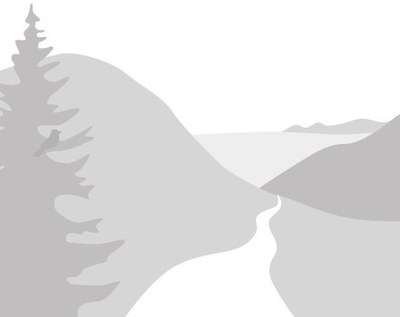
Trip Report
Chair Peak/Northeast Buttress
- Tue, Aug 5, 2014
- Chair Peak/Northeast Buttress
- Climbing
Started at 6:45am and reached the base of the climb at 9:30am. We followed the Snow Lake trail to the saddle at 4400 feet (there is a large wooden Alpine Lakes Wilderness sign there) and then followed a side trail to the west. The trail is in good shape and easy to follow. This leads to a large talus field with stable rock that is fun to scramble. Head toward the left (there is even a "trail" of smaller rocks up part of this), looking for a cairn which marks a good path through the trees that leads to another talus field. Continue to follow cairns and paths through trees until reaching the Thumbtack. From there we climbed up a snowfield which starts at fairly low angle but gets steep at the end. We used crampons/microspikes which weren't strictly necessary since the snow was not too hard and there were plenty of suncups, but I recommend bringing them anyway just in case. We didn't use them going down. At the top of the snowfield was the only really bad section of loose rock, which continued to the base of the climb.
The first pitch can be completely scrambled but we roped up since a slip on the first part could result in a long fall. Leaders did not end up placing protection, however. After the first "gash" in the cliff there is some walking toward the right to a bent over live tree which makes a good belay anchor. The second pitch logically ends at the clump of trees halfway up the NE Buttress, but from the first anchor you need slightly more than a 60m rope. Options would be to extend from the lower anchor a bit using a cordellete and slings, or simulclimb the last bit. You could also try building an anchor in the rock at the base but there's not much to use--a larger cam (2 inches or more) would be helpful but none of us brought gear that large.
A thunderstorm arrived at around 11am as the first group had just finished the second pitch and we decided to call the climb and retreat. Fortunately we were in good position with all three rope teams spread out. The top team set up a single-rope rappel which the leader of the second team used to get down to the intermediate anchor of the second pitch. This is a horn slung with a fair amount of old webbing and rope, and with a fairly new locking biner to rappel off of. Another single rope rappel was set up there while the third team set up a single-rope rappel down the first pitch. Everyone was able to descend quickly with no waiting and we were all down at the base in less than a half hour. The rain hit just after that, but did not last long. I recommend single-rope rappels as the chance of getting the rope stuck otherwise would be high.
For the two pitches we did, the climbing is easy but interesting and very enjoyable. It's at most low 5th class and can be done in mountaineering boots but there are some friction moves which might be more comfortable in rock shoes. There aren't many places to place protection so leaders should be comfortable running it out. I brought 5 camalots from 0.4 to 1 and some smaller nuts plus 6 slings (3 single and 3 double). This was enough gear but I would bring all double slings next time--the route meanders quite a bit. There were apparently two scramble sections and one roped pitch after the second pitch--I cannot comment on them.
Weather remained unstable but improved enough overall that we were not in a particular hurry to get down. We reached the trailhead at 2:35pm. Mosquitoes were quite bad and it was sad that we could not complete the climb, but overall it was a wonderful experience. There were no other parties doing the climb that day but plenty of hikers on the Snow Lake trail when we went down.
 John Leo
John Leo
 admin
admin